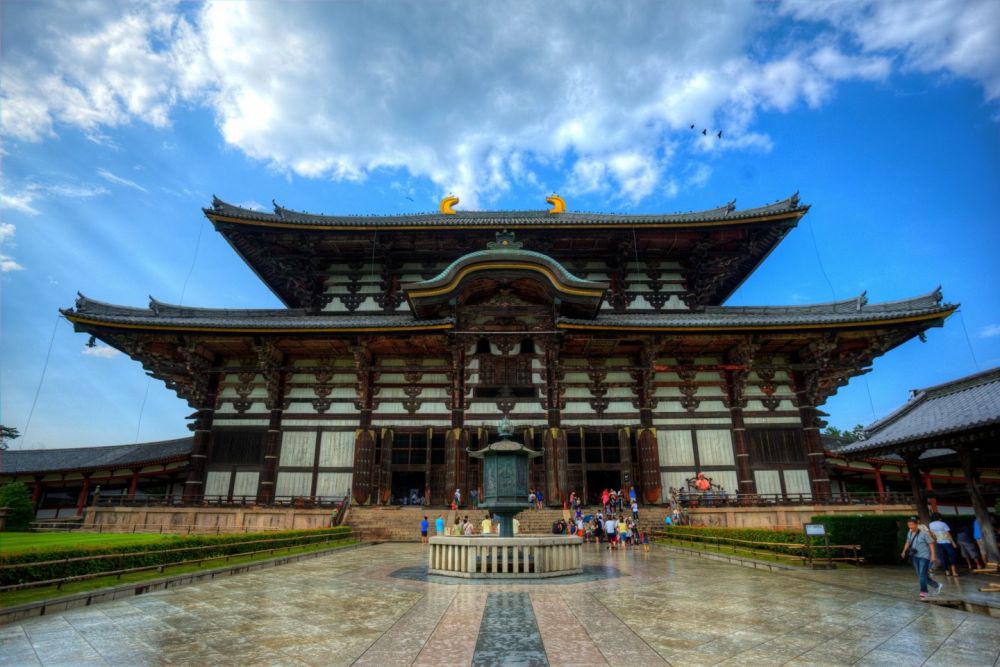

Todaiji Temple, located in the ancient city of Nara, is a significant historical and religious site in Japan. Its role in tourism extends back for centuries, as it has long been a place of pilgrimage and cultural importance.
Established in the year 752, Todaiji Temple is renowned for housing the world's largest bronze statue of the Buddha Vairocana, known in Japanese as Daibutsu. The temple has been a powerful symbol of national unity, as it was commissioned by Emperor Shomu and became the head of all provincial Buddhist temples in Japan. Its cultural and historical importance drew visitors even in ancient times.
The structure itself has borne witness to numerous historical events, surviving damage from wars, earthquakes, and fires through the centuries. It was rebuilt twice after major fires in the 12th and 16th centuries, with the current structure dating back to 1709. Despite being only two-thirds of its original size, it remains the largest wooden building in the world—a fact that continues to attract scores of visitors.
The history of tourism at Todaiji extends back to the Edo period, during which travel for leisure and religious purposes began to flourish among the populace. People from various social strata would come on pilgrimage to Nara and Todaiji Temple. The introduction of rail travel in the Meiji Restoration era further facilitated access to the city and its historic sites. Todaiji became not merely a pilgrimage destination, but a must-see for domestic and international travelers alike.
In the post-war period, Todaiji gained UNESCO World Heritage status as part of the "Historic Monuments of Ancient Nara" listing in 1998. This recognition propelled it to the forefront of global tourism, marking it as a site of significant cultural and historical value.
Today, Todaiji continues to be a popular destination for tourists from all over the world. The latest tourism trend is the increasing importance of sustainability and responsible travel. Efforts are made to preserve the temple and its surroundings for future generations while accommodating the large numbers of tourists visiting each year.
With the advancement of technology, virtual and augmented reality tours have also started to complement the traditional tourism experience, allowing those who cannot visit in person to explore the temple remotely.
Furthermore, the annual events held at Todaiji, such as Shunie (Omizutori) in March and the Nara Tokae in August, continue to draw visitors seeking to experience Japanese culture and traditions first-hand.
The temple's symbiotic relationship with Nara Park and its famous free-roaming deer is another aspect that enhances the tourist experience, combining cultural heritage with natural beauty.
As Todaiji Temple stands resilient through the ages, it remains a quintessential emblem of Japan's cultural legacy and continues to charm visitors with its serene grandeur and spiritual ambience.